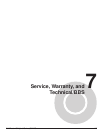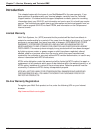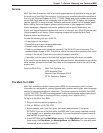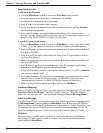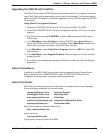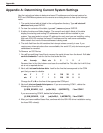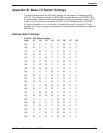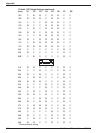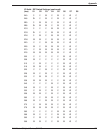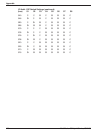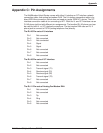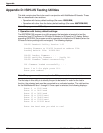
124 MultiModemISI Hybrid Series, ISIHI-2S
Appendix
Appendix A: Determining Current System Settings
Use the instructions below to determine base I/O addresses and interrupt vectors for
SCO and UNIXWare systems and to remove an existing device to free up its interrupt
value.
1. The serial device table is listed in the configuration directory. Type cd /etc/conf/
sdevice.d and press ENTER.
2. To view the contents of the table, type cat* | more and press ENTER.
3. A table of entries and fields displays. The seventh and eighth fields of this table
display the starting and ending I/O addresses for each device installed in your
system. You must select a unique I/O address for each card you are installing, noting
that each ISIHI-2S requires the base I/O address and the next seven addresses.
Make certain that none of these addresses is being used.
4. The sixth field from the left contains the interrupt values currently in use. If you
require more interrupt values than are available, the serial I/O (sio) devices are good
candidates for removal.
To Remove an SIO Device
1. You will be modifying three files to remove the serial drivers from the kernel. Edit /etc/
conf/cf.d/mdevice. Look for the line that looks like this:
sio Iocrwip iHctr sio 0512-1
Remove the r in the third column and save the modified file. This tells the Link Kit that
sio is not a required device.
2. Next, edit /etc/conf/sdevice.d/sio. Look for the line that corresponds to the COM
port that you want to disable.
sioY17143f83ff00
sioY17132f82ff00
Change the Y to N on the line of the appropriate COM port.
3. Next edit /etc/conf/pack.d/sio/space.c. If you are removing COM 1, delete the
following line from this file:
{0, IBM_BOARD, 1,4,0 (sd)0x3f8,0, 0,MCRBIT3}, /*ibm COM1*/
If you are removing COM 2, delete the following line:
{0, IBM_BOARD, 1,3,8 (sd)0x2f8,0, 0,MCRBIT3}, /*ibm COM2*/
4. After you have modified these files, continue with the ISIHI-2S driver installation using
the freed IRQ value(s).




